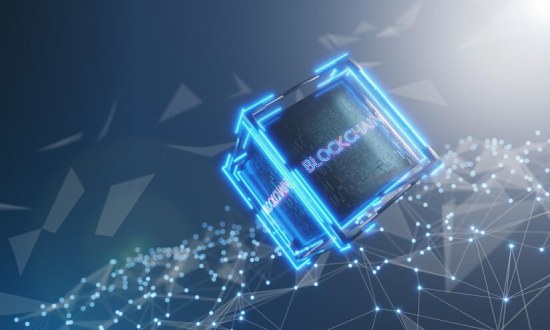-
Below is an exhaustive guide on developing gold-backed tokens. This guide covers everything from foundational concepts and technical details to regulatory compliance and best practices. Disclaimer: This guide is provided for educational and informational purposes only and does not constitute financial, legal, or investment advice. Always perform your own due diligence and consult with professionals like Oodles Blockchain, a crypto/token development company before launching any blockchain or token project.
An Exhaustive Guide to Gold-backed Token Development
Gold-backed tokens represent an innovative fusion of traditional asset security with modern blockchain technology. By tying the value of a digital token to physical gold reserves, these tokens aim to offer a stable, secure, and transparent store of value. This guide walks you through the complete process of developing a gold-backed token—from conceptualization to launch, and beyond.
Understanding Gold-backed Tokens
What Are Gold-backed Tokens?
Gold-backed tokens are digital assets whose value is pegged to physical gold. Each token is typically equivalent to a specific quantity of gold (e.g., one gram or one ounce) held in reserve by a trusted custodian. This arrangement offers several benefits:
- Stability: Gold has historically been a stable store of value.
- Transparency: Blockchain technology provides an immutable record of token issuance and transactions.
- Accessibility: Digital tokens make gold investment more accessible to a global audience.
- Efficiency: Facilitates faster, borderless transactions compared to traditional gold trading.
Key Components
- Physical Gold Reserve: Secure storage managed by accredited custodians.
- Smart Contracts: Self-executing contracts on the blockchain that define token rules and facilitate transactions.
- Auditing Mechanisms: Regular audits ensure the gold reserves match the token supply.
- Redemption Process: A mechanism that allows token holders to redeem their tokens for physical gold or its equivalent value.
Also, Read | Creating a Token Curated Registry (TCR) on Ethereum
Advantages and Challenges
Advantages
- Liquidity and Accessibility: Enables fractional ownership of gold and easy trading on blockchain platforms.
- Reduced Volatility: Gold's long-term stability can help mitigate the extreme price fluctuations common in purely digital assets.
- Global Reach: Tokens can be traded internationally without the complications of physical gold transport.
- Transparency: Blockchain's public ledger allows for verifiable token supply and transaction history.
Challenges
- Regulatory Compliance: Navigating financial regulations and ensuring adherence to anti-money laundering (AML) and know-your-customer (KYC) requirements.
- Custodial Risk: Ensuring the security and legitimacy of physical gold storage.
- Audit and Trust: Establishing a reliable auditing process to maintain investor confidence.
- Technical Complexity: Integrating blockchain technology with traditional asset custody.
Also, Check | Create DeFi Index Fund with Custom ERC-4626 Tokenized Vaults
Regulatory Considerations and Legal Framework
Navigating Global Regulations
Gold-backed tokens intersect with both digital asset regulation and traditional financial law. Key considerations include:
- Securities Laws: Determine whether your token qualifies as a security, which may require registration or adherence to specific legal frameworks.
- Commodity Regulations: Since the underlying asset is gold, you may also need to comply with commodity trading rules.
- AML/KYC Compliance: Implement robust customer verification processes to prevent illicit activities.
- Jurisdiction-Specific Guidelines: Regulations vary significantly by country; consult with legal experts to ensure compliance in every operating region.
Legal Best Practices
- Engage Legal Counsel: Work with lawyers who specialize in both blockchain technology and financial regulation.
- Transparent Documentation: Clearly document tokenomics, custodial arrangements, and redemption policies.
- Regular Audits: Schedule periodic third-party audits to verify that gold reserves are intact and sufficient to back the tokens issued.
Blockchain Technology Considerations
Selecting the Right Blockchain
When developing a gold-backed token, choosing the appropriate blockchain is crucial. Consider the following factors:
- Transaction Speed and Scalability: Look for a platform that supports high throughput to manage potentially large trading volumes.
- Security: Ensure the blockchain has a robust security track record.
- Smart Contract Functionality: Platforms like Ethereum (ERC-20 tokens), Binance Smart Chain, or Solana offer mature ecosystems and tools.
- Cost: Consider transaction fees (gas fees) and the overall cost of deploying and interacting with smart contracts.
Recommended Platforms
- Ethereum: Well-established with a large developer community and extensive smart contract support.
- Binance Smart Chain: Offers lower transaction fees and fast confirmation times.
- Solana: Known for high throughput and low fees, suitable for projects expecting high transaction volumes.
Also, Discover | Build a Custom Bonding Curve for Token Sales with Solidity
5. Tokenomics and Economic Model
Defining Tokenomics
Tokenomics involves the design of the token's economic model. Key elements include:
- Token Supply: Establish the total number of tokens that will be issued based on the physical gold reserve.
- Peg Ratio: Define the conversion ratio (e.g., 1 token = 1 gram of gold).
- Issuance and Redemption: Outline how tokens are minted and burned to maintain parity with physical gold reserves.
- Distribution: Decide on allocation methods (public sale, private investment, reserve allocation) and any associated vesting schedules.
- Incentive Structures: Consider rewards for early adopters, staking mechanisms, or loyalty programs to drive engagement.
Example Tokenomics Structure
- Fixed Supply: The token supply is capped and fully collateralized by physical gold.
- Minting Process: New tokens can only be minted when additional gold is securely added to the reserve.
- Burn Mechanism: Tokens are burned (removed from circulation) when redeemed for physical gold.
- Transparency: Regularly publish reserve audit reports to maintain trust.
Smart Contract Development
Core Development Steps
Select a Framework and Language:
- For Ethereum, use Solidity.
- For Solana, use Rust with frameworks like Anchor.
- For Binance Smart Chain, Solidity remains the primary language.
Develop the Token Contract:
- Implement standard token protocols (ERC-20 for Ethereum or SPL tokens for Solana).
- Integrate functions for minting, burning, and transferring tokens.
- Include mechanisms for pausing or freezing transactions in case of emergencies.
Integrate Gold Reserve Verification:
- Use oracles or trusted data feeds to regularly update the blockchain with information about the physical gold reserves.
- Implement multi-signature authorization for actions involving reserve adjustments.
Testing and Deployment:
- Unit Tests: Write comprehensive tests to validate each function of the smart contract.
- Integration Tests: Simulate full workflows, including minting, burning, and redemption.
- Audits: Engage third-party auditors to review the code for vulnerabilities and ensure compliance with best practices.
Also, Explore | Develop a Multi-Token Crypto Wallet for Ethereum with Web3.js
Sample Solidity Snippet (for an ERC-20 Gold-backed Token)
// SPDX-License-Identifier: MIT pragma solidity ^0.8.0; import "@openzeppelin/contracts/token/ERC20/ERC20.sol"; import "@openzeppelin/contracts/access/Ownable.sol"; contract GoldBackedToken is ERC20, Ownable { uint256 public constant TOKEN_TO_GOLD_RATIO = 1e18; // 1 token represents 1 gram of gold (example conversion) // Mapping for gold reserve verification (could be updated by a trusted oracle) uint256 public totalGoldReserve; constructor(uint256 _initialGoldReserve) ERC20("GoldBackedToken", "GBT") { totalGoldReserve = _initialGoldReserve; uint256 initialSupply = _initialGoldReserve * TOKEN_TO_GOLD_RATIO; _mint(msg.sender, initialSupply); } // Function to mint new tokens when additional gold is secured function mintTokens(address to, uint256 goldAmount) external onlyOwner { uint256 tokenAmount = goldAmount * TOKEN_TO_GOLD_RATIO; totalGoldReserve += goldAmount; _mint(to, tokenAmount); } // Function to burn tokens when tokens are redeemed for gold function burnTokens(address from, uint256 tokenAmount) external onlyOwner { uint256 goldAmount = tokenAmount / TOKEN_TO_GOLD_RATIO; require(totalGoldReserve >= goldAmount, "Insufficient gold reserve"); totalGoldReserve -= goldAmount; _burn(from, tokenAmount); } }Note: This simplified example is for illustrative purposes only. Production-level contracts should include additional security measures and integration with external gold reserve verification systems.
Custody and Auditing of Physical Gold
Custody Solutions
- Partner with Accredited Custodians: Collaborate with reputable institutions that specialize in secure gold storage.
- Insurance and Security: Ensure that the gold reserves are insured and stored in facilities with top-tier security protocols.
- Regular Reporting: Provide transparent, periodic reports on the status of the gold reserves.
Auditing Practices
- Third-Party Audits: Engage independent auditing firms to verify that the gold reserves match the token supply.
- Blockchain Audits: Have your smart contracts audited by cybersecurity experts to identify and mitigate vulnerabilities.
- Public Disclosure: Publish audit reports to build and maintain community trust.
Launch and Community Engagement
Pre-launch Activities
- Beta Testing: Launch a pilot program or testnet version to gather feedback and identify potential issues.
- Community Building: Develop a strong online presence through social media channels, webinars, and forums. Transparency about the project's progress and challenges is key.
- Partnership Announcements: Collaborate with trusted custodians, auditors, and regulatory advisors, and make these partnerships public.
Post-launch Best Practices
- Continuous Monitoring: Regularly monitor both the technical performance of your smart contracts and the status of the gold reserves.
- Feedback Loop: Actively solicit and incorporate feedback from your community.
- Regular Updates: Keep your community informed about software upgrades, regulatory changes, or updates in your custodial arrangements.
You may also like | Creating a Token Vesting Contract on Solana Blockchain
Future Outlook and Continuous Improvement
Scaling and Innovation
- Expand Utility: Consider integrating your gold-backed token with DeFi protocols, enabling lending, staking, or collateralization.
- Enhanced Transparency: Leverage emerging technologies such as IoT devices for real-time tracking of gold reserves.
- Cross-Chain Compatibility: Explore bridging your token to multiple blockchain networks to enhance liquidity and reach.
Staying Informed
- Regulatory Changes: Stay abreast of evolving regulations in both the blockchain and commodities sectors.
- Technological Advances: Regularly update your technical infrastructure to incorporate the latest advancements in blockchain security and scalability.
Conclusion
Developing a gold-backed token is a multidisciplinary endeavor that merges traditional asset security with modern blockchain innovation. By understanding the nuances of tokenomics, regulatory compliance, smart contract development, and secure custody, you can create a robust, transparent, and trustworthy digital asset that leverages the enduring value of gold.
Key takeaways include:
- Thorough Planning: Establish clear tokenomics, custodial arrangements, and compliance measures.
- Technical Rigor: Develop and rigorously test smart contracts, ensuring they integrate seamlessly with physical asset verification systems.
- Transparency and Trust: Maintain regular audits, open communication, and strong partnerships with accredited custodians and regulatory bodies.
For further information and resources, consider exploring:
- Ethereum Developer Documentation
- Binance Smart Chain Documentation
- Solana Documentation
- International Standards for Gold Custody
By adhering to these guidelines and best practices, you'll be well-positioned to develop a gold-backed token that not only stands up to regulatory scrutiny but also earns the trust of a global community of investors.
The regulatory environment and technology landscape are continuously evolving, so always verify details and consult blockchain developers and experts regularly.
You may also like | How to Use a Web3js Call Contract Function

Our Offices
INDIA
Emaar Digital Greens, Sector 61,
Gurugram, Haryana
122011.
Welldone Tech Park,
Sector 48, Sohna road,
Gurugram, Haryana
122018.















